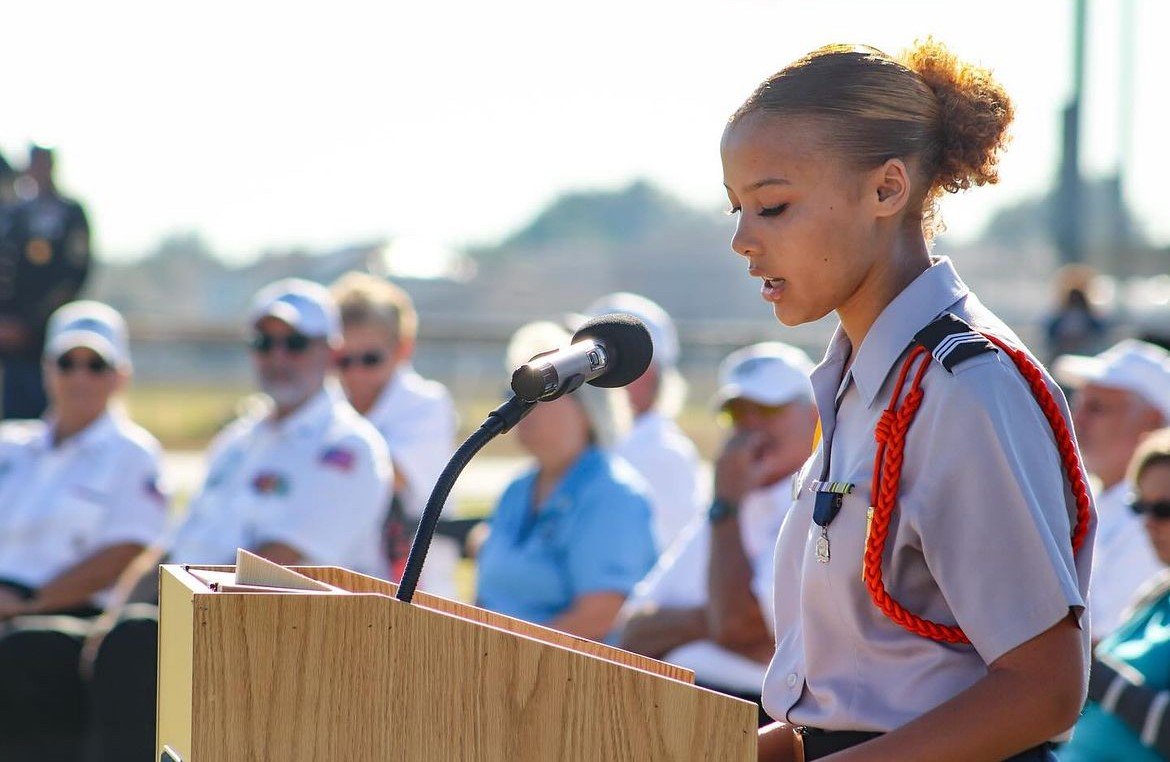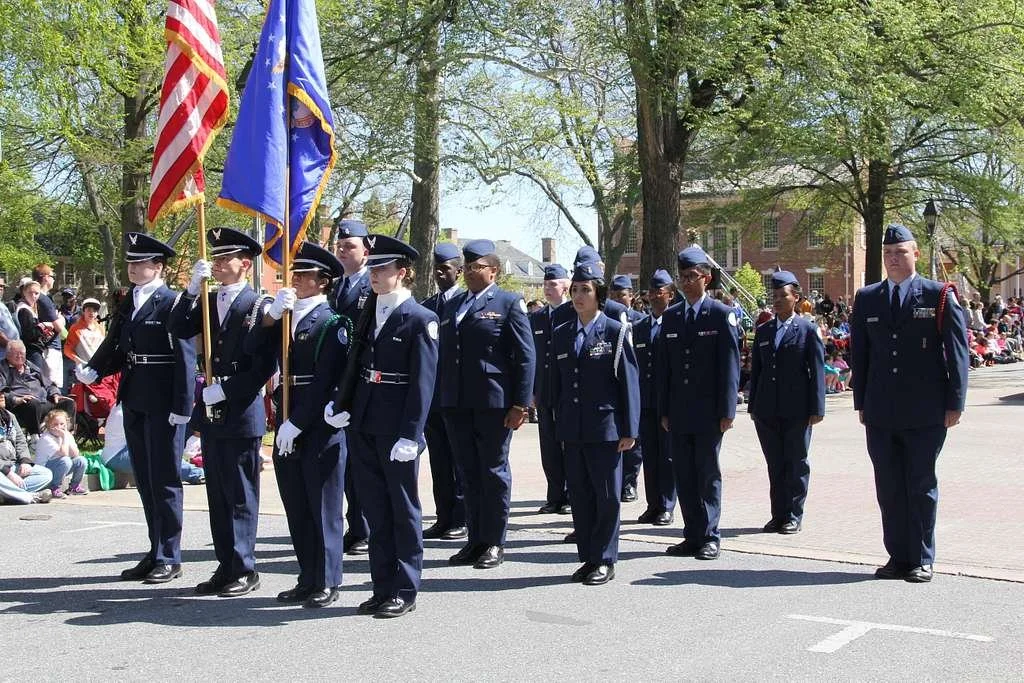
“In 30 years as an educator, I never found a program that prepared students for success in college or career better than JROTC”
-Phil, Professor & JROTC Parent
Information & FAQs
Overview
A JROTC program in a Nebo School District high school will offer our students unique and exciting opportunities to excel.
Because the Dept. of Defense funds the majority of the program, establishing a new unit requires the school to apply and demonstrate its suitability for approval. This includes an expected enrollment of 100 students, or 10% of the school body (whichever is less).
Other steps include identifying appropriate facilities at a school, integrating the curriculum into the school’s graduation track, and selecting instructors, who are typically retired servicemembers.
This website is run by parents who recognize the benefits of such a program to our students, parents, school, and community. We hope to gather interest and organize efforts to establish JROTC in a Nebo District high school.
FAQs
General Questions
-
The Junior Reserve Officers' Training Corps (JROTC) is a high school program sponsored by the U.S. military that focuses on leadership, citizenship, personal responsibility, and life skills. It is not a military recruitment program.
JROTC is designed to teach high school students the value of citizenship, leadership, service to the community, personal responsibility, and a sense of accomplishment. It fosters self-esteem, teamwork, and self-discipline. JROTC prepares high school students for responsible leadership roles and is a stimulus for promoting graduation and preparation for life after high school.
-
No! While it is sponsored by the military, the primary focus is to develop good citizenship and life skills..
Students in JROTC are not part of the military, and make no commitment to join. Instructors are typically retired servicemembers, not recruiters. Instructors do NOT recruit students to join the military.
Students enrolled in JROTC are referred to as “cadets,” and participate in their academic instruction and co-curricular activities through a student-led leadership structure.
-
JROTC is a primarily academic program sponsored by the Department of Defense. Each program is affiliated with a particular branch of service—Army, Navy, Air Force, or Marines—and the school receives funding from that branch to administer the program.
JROTC focuses on leadership, citizenship, personal responsibility, and life skills. While some students may choose to pursue military careers, the program’s primary focus is preparing students for success in any field.
-
No. JROTC is an accredited academic program integrated into the students’ high school career. Students enrolled in JROTC typically spend one class period in JROTC during their normal day, and the rest of their classes as usual.
Many schools allow JROTC to count toward core high school credits, as well as P.E. and elective credit.
Additionally, beyond school-day classes, JROTC typically provides extracurricular opportunities, such as:
Presentation of Colors (Color Guard)
Charity Events
Parades
Drill Competitions
Marksmanship Matches
Summer Camps
Fitness Competitions
Formal Military Ball
Awards Nights
Annual Inspections
Community Service
Academic Competitions
Field Trips
Program Details
-
“JROTC curriculum provides equitable and challenging academic content and authentic learning experiences for all Cadets. Lessons are designed using a four part model to motivate the Cadet, allow the Cadet to learn new information, practice competency, and apply the competency to a real-life situation. Moreover, the four part model requires Cadets to collaborate, reflect, develop critical thinking skills, and integrate content with other disciplines. JROTC curriculum includes lessons in leadership, health and wellness, physical fitness, first-aid, geography, American history and government, communications, and emotional intelligence.
The curriculum is rigorous and relevant to 21st century education. In fact, many high schools grant core credits for some of the subjects taught in JROTC.”
(Excerpt from US Army JROTC Program Overview. Each branch’s curriculum is similar.)
-
JROTC is primarily an academic program, but also offers leadership training, team-building exercises, community service projects, physical fitness, and optional extracurriculars like drill teams, color guards, and academic competitions.
Some school choose to offer an optional Air Rifle Marksmanship & Safety co-curricular. JROTC does not train combat skills.
-
JROTC programs are led by retired military personnel who are certified as instructors. They are trained to work with high school students and focus on education, not recruitment.ription
-
JROTC is a student-led structure. Students enrolled in JROTC are referred to as cadets. Each cadet is issued a uniform, which they are required to wear one day a week. Cadets are promoted to higher ranks (Private, Corporal, Sergeant, and so forth) as they maintain GPA standards, pass exams, demonstrate leadership, etc. Cadets are also awarded ribbons for various achievements.
Cadets in leadership positions are responsible for the training, discipline, and welfare of those they lead and serve. Key positions include responsibility for supplies, logistics, public affairs, training, schedules, ceremonies, events, and more.
-
We don’t know yet! The curriculum, structure, and requirements to establish a program are very similar with each branch.
Once enough parents and students have shown interest, one step will be determining which branch might be the best fit for our community.
-
JROTC programs are typically free to students. Uniforms, textbooks, and most supplies are provided by the program. There may be minimal costs for optional activities like field trips or competitions.
Starting the Program
-
Gauging community interest and collecting enrollment commitments estimates.
Securing approval from school and district leadership.
Submitting an application to the U.S. military for program sponsorship.
Once approved, hiring certified instructors and equipping the school.
-
Yes. In rough order of proximity:
Independence High School - Provo (Army)
Utah Military Academy - Lehi (Air Force)
Wasatch High School - Heber (Air Force)
Herriman High School - Herriman (Army)
Providence Hall High School - Herriman (Navy)
Jordan High School - Sandy (Navy)
Taylorsville High School - Taylorsville (Army)
Granger High School - West Valley (Air Force)
West High School - Salt Lake City (Navy)
Northridge High School - Layton (Air Force)
Utah Military Academy - Riverdale (Air Force)
Ogden High School - Ogden (Army)
Ben Lomond High School - Ogden (Army)
Pine View High School - St. George (Air Force)
Dixie High School - St. George (Air Force)
-
As parents, we recognize that the Nebo School District and School Board are primary stakeholders in this initiative. We maintain close communication, and they have been very supportive of our interest-gathering efforts. There has been no official decision to establish a program—partly because starting a JROTC program requires an application to the Department of Defense, who will ultimately render their decision—but we are extremely grateful that the District, the Board, and other local administrators have been collaborative and supportive at every step thus far.
-
We don’t know yet! This page is owned and maintained by parents who hope to work with any high school in the Nebo School district willing and able to adopt the program. There’s nothing stopping multiple schools from implementing a JROTC program, but the focus is to establish one, as a start.
-
Once we meet the enrollment requirement, arrange logistics with the host school, and receive approval, the program can launch. Exact timing depends on the application and setup process.
You can sign up to receive updates as we progress.
-
You can help by:
Expressing interest for your child to enroll: CLICK HERE.
Spreading the word to other parents and students.
Encouraging school administrators to support the program.
Donate to help us maintain this website, print flyers, and send mailers.
Contact us about volunteer and support opportunities.
“JROTC is more than just another subject. It’s a guide on how to live a successful life. Cadets are guided by the JROTC Creed and taught by instructors vetted and trained to bring out the best in their students.
Many former JROTC students have stayed in touch years after they graduated to let me know how much the program helped prepare them for their future endeavors.”
-CW5 (Ret.) Brad Lupien, Former JROTC Instructor


